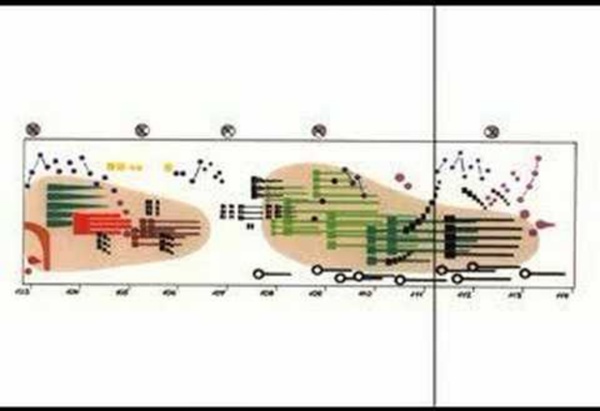



http://www.youtube.com/watch?v=71hNl_skTZQ
Related: Musique • Analyse MusicaleEvery Noise at Once italian progressive metal deep symphonic black metal christian symphonic metal Qu'est ce que c'est que? Upload GarconsSVP Loading... Working... ► Play all The Sound of Empty Space - Everyday Listening - Sound Art, Sound Installations, Sonic Inspiration Feedback is a phenomenon which is not uncommon in sound art. Steve Reich’s Pendulum Music used swinging microphones over speakers to create different tones in a certain rhythm, already back in 1968. There is something primeval about feedback, the way it can run out of control and become chaotic.
Scientists Are Making Music with Slime Mold and Whale Songs Down on the southwest coast of England, the Peninsula Arts Contemporary Music Festival recently celebrated its tenth birthday. Run in collaboration with Plymouth University and the Interdisciplinary Center for Computer Music Research (ICCMR) which is housed there, the festival is an epicenter for musical experimentation and research into far-out sonification and musification techniques. This year's theme is biomusic, a niche field of centered around biological processes that inform and create musical compositions, be they artificially intelligent virtual whales jamming with a saxophonist, a biocomputer run on slime mold doing a duet on the piano, or data collated from British woodland ecosystems turning into music. Over the weekend, a series of gala performances explored some of the concepts and ideas that the students and professors at Plymouth University had been working on over the past year.
These 20 Unorthodox Instruments Are Making the Music of the Future The Margaret Guthman Musical Instrument Competition doesn’t crown any old clarinet or guitar. Nicknamed the “X-Prize of musical instruments,” the annual Georgia Tech competition showcases the revolutionary ideas and innovations that are changing the way music is made and experienced, and highlights some of the best instrument makers in the world. “A lot of what the judges have to deal with is trying to define for themselves what it means to be a musical instrument. Sounds of Science: The Mystique of Sonification Welcome to the final installment of Hearing the UnHeard, Sounding Out!‘s series on what we don’t hear and how this unheard world affects us. The series started out with my post on hearing, large and small, continued with a piece by China Blue on the sounds of catastrophic impacts, and Milton Garcés’ piece on the infrasonic world of volcanoes. To cap it all off, we introduce The Sounds of Science by professor, cellist and interactive media expert, Margaret Schedel.
Water Nest 100: An Eco-Friendly, Solar-Powered Home Made With Near 100% Recycled Materials What do you call a home that can sit on small or large bodies of calm water, is eco-friendly, solar-powered, and made from 98% recycled materials. I call it amazing, but the design group, Giancarlo Zema, called it the Water Nest 100. Giancarlo Zema is based in Rome and specializes in semi-submerged architectural structures, marine parks, floating habitats, yacht and interior design. They designed the Water Nest 100 for EcoFloLife, a company based in London that manufactures and sells eco-friendly floating residential structures. I think they hit a big winner with this model.
Non-Human Rhythms 1 Non-Human Rhythms 1 is the first of a series of live recordings featuring different micro-organism and there bio-electrical activity translated in to a sound process. In this release listen to 30 minutes of signal originated in bacterial fuel cells. System connections and distribution: The setup for this recording is based on readings coming from two microbial fuel cells containing different bacterial consortiums see this post to find out more : The flow chart shows the connections and the way the bioelectrical signal is distributed to the system: This is one of the possible ways to setup the system, in every release we intend to also share the technique we are implementing with every micro-organism and their signals.